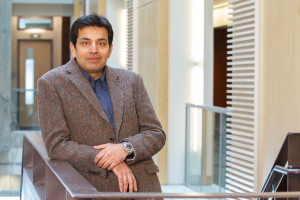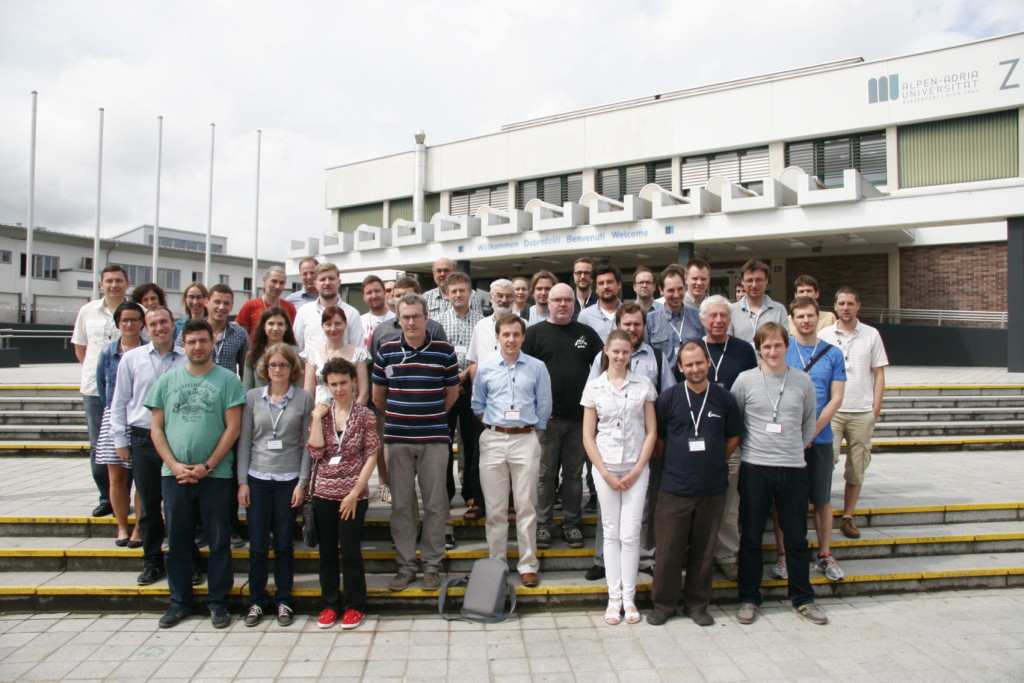Faisal Z. Qureshi | 13.01.2016 | 10:00 Uhr | Seminarraum Lakeside Labs B4.1.114
Abstract:
We developed a new method for extracting 3D flight trajectories of droplets using high-speed stereo capture. We noticed that traditional multi-camera tracking techniques fare poorly on our problem, in part due to the fact that all droplets have very similar shapes, sizes and appearances. Our method uses local motion models to track individual droplets in each frame. 2D tracks are used to learn a global, non-linear motion model, which in turn can be used to estimate the 3D locations of individual droplets even when these are not visible in any camera. We have evaluated the proposed method on both synthetic and real data and our method is able to reconstruct 3D flight trajectories of hundreds of droplets. The proposed technique solves for both the 3D trajectory of a droplet and its motion model concomitantly, and we have found it to be superior to 3D reconstruction via triangulation. Furthermore, the learned global motion model allows us to relax the simultaneity assumptions of stereo camera systems. Our results suggest that, even when full stereo information is available, our unsynchronized reconstruction using the global motion model can significantly improve the 3D estimation accuracy.
Bio:
 Faisal Qureshi is an Associate Professor of Computer Science at the University of Ontario Institute of Technology (UOIT), Oshawa, Canada. He obtained a PhD in Computer Science from the University of Toronto in 2007. He also holds an M.Sc. in Computer Science from the University of Toronto, and an M.Sc. in Electronics from Quaid-e-Azam University, Pakistan. Prior to joining UOIT, he worked as a Software Developer at Autodesk. His research interests include sensor networks, computer vision, and computer graphics. He has also published papers in space robotics. He has interned at ATR Labs (Kyoto, Japan), AT&T Research Labs (Red Bank, NJ, USA), and MDA Space Missions (Brampton, ON, Canada). He is a member of the IEEE and the ACM.
Faisal Qureshi is an Associate Professor of Computer Science at the University of Ontario Institute of Technology (UOIT), Oshawa, Canada. He obtained a PhD in Computer Science from the University of Toronto in 2007. He also holds an M.Sc. in Computer Science from the University of Toronto, and an M.Sc. in Electronics from Quaid-e-Azam University, Pakistan. Prior to joining UOIT, he worked as a Software Developer at Autodesk. His research interests include sensor networks, computer vision, and computer graphics. He has also published papers in space robotics. He has interned at ATR Labs (Kyoto, Japan), AT&T Research Labs (Red Bank, NJ, USA), and MDA Space Missions (Brampton, ON, Canada). He is a member of the IEEE and the ACM.
 Großes bewegen, Menschen zum Staunen bringen – das ist die Mission der UPPERCUT group GmbH. Unter dieser Dachmarke hat sich im Laufe eines Jahrzehnts ein einzigartiges Team formiert, das von Web, Mobile, Software, Animationslösungen und Film bis hin zu Marketing, PR und Eventplanung eine breite Palette an professionellen Kommunikationsdienstleistungen anbietet. Jeder einzelne unserer 50 Experten ist ein Spezialist in seinem Fach, international ausgerichtet und getragen von Kreativität, Innovation und Herzblut.
Großes bewegen, Menschen zum Staunen bringen – das ist die Mission der UPPERCUT group GmbH. Unter dieser Dachmarke hat sich im Laufe eines Jahrzehnts ein einzigartiges Team formiert, das von Web, Mobile, Software, Animationslösungen und Film bis hin zu Marketing, PR und Eventplanung eine breite Palette an professionellen Kommunikationsdienstleistungen anbietet. Jeder einzelne unserer 50 Experten ist ein Spezialist in seinem Fach, international ausgerichtet und getragen von Kreativität, Innovation und Herzblut.





